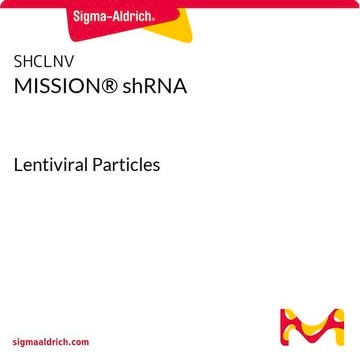価格・在庫情報は確認できません。詳細については、Merckをご覧ください。
おすすめの製品
由来生物
rabbit
品質水準
抗体製品の状態
serum
抗体製品タイプ
primary antibodies
クローン
polyclonal
交差性
human
メーカー/製品名
Chemicon®
テクニック
ELISA: suitable
immunohistochemistry (formalin-fixed, paraffin-embedded sections): suitable
western blot: suitable
輸送温度
dry ice
ターゲットの翻訳後修飾
unmodified
特異性
アルツハイマー病、ダウン症、健常高齢者の神経原線維変性および変性プラークの神経突起を特異的に染色します。
免疫原
煮沸SDS抽出、ショ糖密度勾配遠心分離で精製した神経原線維変化
アプリケーション
パラフィン包埋したビブラトームおよび凍結切片での免疫組織染色:それぞれ希釈倍率1:200以上、1:2,000以上で使用できます。
ウェスタンブロッティング:希釈倍率1:500以上で使用できます。
免疫原ペプチドを用いたELISA:希釈倍率1:4,000以上で使用できます。
最適なワーキング希釈倍率は、ご自身で決定してください。
ウェスタンブロッティング:希釈倍率1:500以上で使用できます。
免疫原ペプチドを用いたELISA:希釈倍率1:4,000以上で使用できます。
最適なワーキング希釈倍率は、ご自身で決定してください。
抗神経原線維変性抗体は、神経原線維変性に対する抗体で、ELISA、WB、IH、IH(P)で使用できます。
研究カテゴリー
神経科学
神経科学
研究サブカテゴリー
神経変性疾患
神経変性疾患
物理的形状
ウサギ抗血清、0.01%チメロサール含有
保管および安定性
未希釈液として-20℃で最長12か月保存できます。凍結・融解サイクルの繰り返しは避けてください。
法的情報
CHEMICON is a registered trademark of Merck KGaA, Darmstadt, Germany
免責事項
メルクのカタログまたは製品に添付されたメルクのその他の文書に記載されていない場合、メルクの製品は研究用途のみを目的としているため、他のいかなる目的にも使用することはできません。このような目的としては、未承認の商業用途、in vitroの診断用途、ex vivoあるいはin vivoの治療用途、またはヒトあるいは動物へのあらゆる種類の消費あるいは適用などがありますが、これらに限定されません。
適切な製品が見つかりませんか。
製品選択ツール.をお試しください
保管分類コード
10 - Combustible liquids
WGK
WGK 1
適用法令
試験研究用途を考慮した関連法令を主に挙げております。化学物質以外については、一部の情報のみ提供しています。 製品を安全かつ合法的に使用することは、使用者の義務です。最新情報により修正される場合があります。WEBの反映には時間を要することがあるため、適宜SDSをご参照ください。
Jan Code
AB1518:
試験成績書(COA)
製品のロット番号・バッチ番号を入力して、試験成績書(COA) を検索できます。ロット番号・バッチ番号は、製品ラベルに「Lot」または「Batch」に続いて記載されています。
Reducing amyloid-related Alzheimer's disease pathogenesis by a small molecule targeting filamin A.
Wang, HY; Bakshi, K; Frankfurt, M; Stucky, A; Goberdhan, M; Shah, SM; Burns, LH
The Journal of Neuroscience null
Milena Penkowa et al.
Journal of neuroscience research, 77(1), 35-53 (2004-06-16)
Transgenic expression of interleukin-6 (IL-6) in the CNS under the control of the glial fibrillary acidic protein (GFAP) gene promoter (GFAP-IL6 mice) induces significant inflammation and neurodegeneration but also affords neuroprotection against acute traumatic brain injury. This neuroprotection is likely
Focal expression of mutated tau in entorhinal cortex neurons of rats impairs spatial working memory.
Julio J Ramirez et al.
Behavioural brain research, 216(1), 332-340 (2010-08-24)
Entorhinal cortex neuropathology begins very early in Alzheimer's disease (AD), a disorder characterized by severe memory disruption. Indeed, loss of entorhinal volume is predictive of AD and two of the hallmark neuroanatomical markers of AD, amyloid plaques and neurofibrillary tangles
Milena Penkowa et al.
Journal of neuroscience research, 79(4), 522-534 (2004-12-23)
We examined metallothionein (MT)-induced neuroprotection during kainic acid (KA)-induced excitotoxicity by studying transgenic mice with MT-I overexpression (TgMT mice). KA induces epileptic seizures and hippocampal excitotoxicity, followed by inflammation and delayed brain damage. We show for the first time that
Leslie Vargas-Saturno et al.
The European journal of neuroscience, 48(12), 3514-3533 (2018-11-08)
Understanding endogenous neurogenesis and neuronal replacement to mature circuits is a topic of discussion as a therapeutic alternative under acute and chronic neurodegenerative disorders. Adaptive neurogenic response may result as a result of ischemia which could support long-term recovery of
アクティブなフィルタ
ライフサイエンス、有機合成、材料科学、クロマトグラフィー、分析など、あらゆる分野の研究に経験のあるメンバーがおります。.
製品に関するお問い合わせはこちら(テクニカルサービス)








